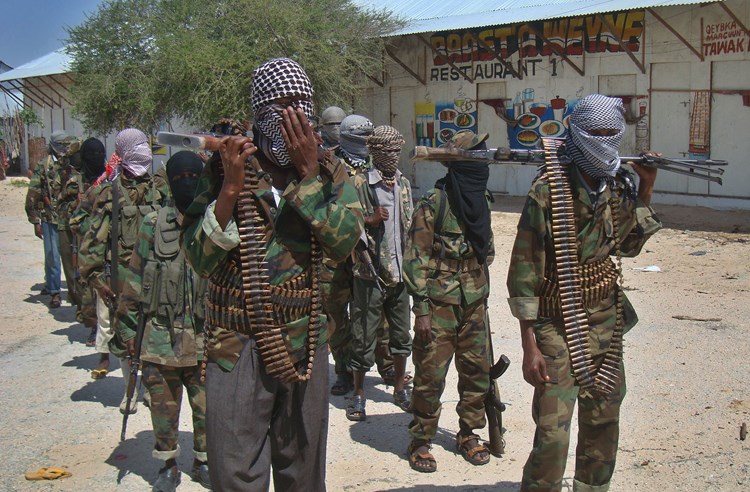A transformation of the configuration of allegiances on the ground appears to be taking place in Somalia, with confrontations taking place between Somalian tribes and Al-Shabab militant group. A new militia, comprised mostly of tribal men, has joined forces with the Somalian army in fighting Al-Shabab in the province of Hiran, in the Hirshabelle governorate. The move on the part of the tribes came in response to growing threats from Al-Shabab, which has been targeting tribal notables, due to their cooperation with the Federal government, and their efforts to secure areas liberated from Al-Shabab control.
The Somalian federal government has lately allowed tribes to form militias in an effort to mobilize all forms of support available to assist the army and the security forces in their anti-terror operations to confront the growing influence of Al-Shabab.
The latest confrontation Hiran can be considered a turning point, as a tribal militia actually participated in violent action, that resulted in the killing of tens of Al Shabab fighters. This was in response to the targeting by Al Shabab of three tribal elders with a landmine on the 16th of September. The coordinated action by tribal and federal forces has been described by local media as “a Tribal uprising” against the threats posed by Al-Shabab. It is noteworthy that Al-Shabab targeted in early September a convoy of humanitarian aid to the governorate, which caused the death of several civilians and the destruction of the commodities the convoy was transporting.
It can be argued that the situation in central Somalia was heading towards a confrontation between Al-Shabab and the tribes, in light of the following factors:
Al-Shabab is a threat to the tribal system: Tribes remain a central pillar of the Somali scene, and have political roles in various governorates. Many of the tribes view Al-Shabab as a threat to the tribal system, as the movement rests on the idea of establishing an “Islamic” system to replace the existing tribal system, with Somalis pledging allegiance to the leaders of this system rather than to tribal elders. This vision caused confrontations between the tribes and Al-Shabab, as well as its predecessor, “the Union od Islamic Courts”, since the 1990s.
Growing activity by Al-Shabab: Since the 2021 decision to withdraw the US forces participating in the war on the “Al-Shabab”, the latter has intensified its operations, most notably in the regions of southern and central Somalia. This was an attempt to regain control of villages that were under the control of the movement prior to the US intervention. Local estimates suggest Al-Shabab controls a fifth of Somali territory, through a strategy of expanding the movement’s presence in villages and remote areas of various provinces.
A declaration of “total war” by the federal government: Since President Hassan Sheikh Mahmoud came to power, he has giving confronting Al-Shabab top priority, as it is the most prominent challenge facing Somalia. This is in line the movement’s increased activity, conducting terrorist attacks even in the heart of the capital, Mogadishu. The attack on the “Hyatt” hotel, which is the headquarters for prominent government officials, last month was preceded by several attacks on parliament as well as the attack on an area containing international offices at Mogadishu Airport last March. The Somali president launched a “total war” on Al-Shabaab to liberate the areas under its control, in addition to reducing its financial capabilities. Several steps were taken including the return of the forces that were training in Eritrea as well as a US decision to return special forces to Somalia to support the operation. During the past few months, and specifically since last June, the armed forces have also sought the aid of tribal militias to combat Al-Shabab.
Growing popular anger at Al-Shabab in Hirshabelle: Popular complaints in the governorate have been rising as Al-Shabab has been sabotaging water wells and properties, as well as executing civilians. The movement has also been targeting officials, such as the attempt to target the Minister of Health and the Minister of Women, through a suicide attack on a hotel last July. The head of the governorate visited the Somali capital last July, where he met the president and the prime minister, in which agreements were made on coordinating efforts to confront Al-Shabab.
The recent moves by tribal militias loyal to the Somali government, against Al-Shabab reflects a growing concern regarding the movement’s attempt to undermine the influence and threaten the interests of the tribal system. Control of central regions in Somalia would give Al-Shabab control over the tribes. Whether or not the tribal system survives, it would become subject to a higher authority. This has motivated the tribes to align with the federal government in fighting Al-Shabab, especially as the latter has been directly targeting tribal figures, and has threatened, through public statements, that any tribes providing support to the federal government will face attacks.
The move to establish tribal militias also reflects the federal government’s limited capabilities, especially in view of the large geographic area on which Al-Shabab operates, and their repeated success in conducting terrorist operations in the capital. Thus, the Somali cabinet expressed its appreciation of the tribal role in this respect. Tribal efforts will be particularly important in securing rural areas once Al-Shabab are routed through military operations. The importance of this role was highlighted by the meeting between the Minister of Interior, Ahmed Moallim Fiqi on September 19th, with a group of tribal elders to discuss their role in supporting stability in the areas liberated from the Al-Shabab. Allowing the tribes to bear arms and cooperate with the armed forces in confronting the movement also represents an attempt to ease pressure on the president and the federal government, due to their inability to control security in the south and center of the country. The Somali minister of interior had previously remarked on the negative impact of Al-Shabab action with respect to the cooperation between the federal and regional governments on important issues, such as the drought.
The federal government also hopes that this new cooperation will stem Al-Shabab’s ability to forge alliances with some tribes, and lure their youth into its ranks. Al-Shabab, according to the government, is deliberately stocking inter-tribal rivalry and conflict, and provides financial support to some tribal figures, who maintain a “back channel” of communication between the movement and various tribes.
In sum, the participation of tribal militias in the Somali army’s operations against Al-Shabaab since last June appears to have helped to regain control of several regions and villages in the center of the country. The support that the tribes have given the military to curb al-Shabab activity could prove to be pivotal in the coming months and could possibly be extended to a larger geographic area. However, there are fears regarding the arming of the tribes, in view of the absence of a legal framework governing the activities of these tribal militias, and the impact of such wide availability of military capabilities, which could be used in inter-tribal disputes in the future. Moreover, tribal militias could possibly change allegiance, leading to confrontations with the armed forces, a scenario which has already occurred once, in a confrontation between army forces and the Ahl al-Sunnah wal Jama’a militia last year, when the latter turned against the government after it had professed to be allied with it in the fight against


